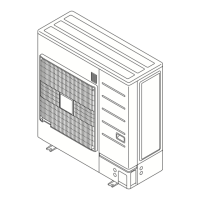
Do you have a question about the Fujitsu Airstage AOU36RLAVS and is the answer not in the manual?
| Brand | Fujitsu |
|---|---|
| Model | Airstage AOU36RLAVS |
| Category | Air Conditioner |
| Language | English |
Key safety warnings and precautions for specific installation scenarios like wiring, transport, and installation.
Specific safety and handling instructions for R410A refrigerant, including pressure and tool requirements.
Lists essential tools required for R410A refrigerant handling and installation, emphasizing pressure resistance.
Details on included parts and accessories to be used during installation.
Information on optional parts specific to R410A refrigerant models.
Guidance on choosing the optimal and safe location for unit installation, considering ventilation and stability.
Specifies required clearances and dimensions for proper unit installation and maintenance access.
Instructions and warnings for safely moving and handling the outdoor unit.
Procedures and considerations for securely mounting the outdoor unit.
Overview of system setup, including refrigerant limits and pipe length configurations.
Guidelines for selecting appropriate refrigerant pipe sizes for optimal system performance.
Recommendations for protecting refrigerant pipes from moisture and dust during installation.
Detailed procedure for brazing refrigerant pipes using nitrogen gas to prevent oxidation.
Instructions for connecting refrigerant pipes to indoor units and separation tubes.
Steps for safely creating and preparing knockout holes for piping and wiring.
General instructions and precautions for connecting refrigerant pipes, including flaring.
Critical safety warnings and guidelines for electrical connections to prevent shock or fire.
Guidance on choosing appropriate power cables and circuit breakers according to local regulations.
Specifications and rules for installing the communication transmission line, including length limits.
Detailed instructions and diagrams for various wiring connections, including power and transmission.
Identification of terminal positions for external inputs and outputs on the outdoor unit PC board.
Configuration options for external inputs like mode selection, priority, and emergency stop.
How to use external output terminals for monitoring unit status and errors.
Information on the base heater terminal and its operation based on outdoor temperature.
Location and access to DIP switches and other setting controls on the outdoor unit PC board.
Guide to configuring DIP switches for various operational settings and system functions.
How to set the rotary switch (REF AD) for refrigerant circuit addressing.
Instructions for using push buttons to set various operational parameters and modes.
Procedures for setting addresses for signal amplifiers within the system for communication.
Steps to enable automatic address configuration for signal amplifiers.
Methods for setting addresses for indoor units in the system, including manual and automatic options.
Steps to enable automatic address configuration for indoor units via the outdoor unit PC board.
Procedure for performing a leak test on the refrigerant piping system using nitrogen gas.
Instructions for evacuating the refrigerant system using a vacuum pump to remove moisture and air.
Steps for adding refrigerant after evacuation, including calculation of amounts and safe charging methods.
Guidance on applying insulation to refrigerant pipes to prevent condensation and protect from elements.
Instructions for filling gaps with putty to prevent pest entry and water ingress into the unit.
Procedure to verify correct indoor unit communication and setup before test operation.
How to interpret and address error codes displayed on the 7-segment display during checks.
Pre-test checks required before performing the unit's operational test, ensuring all conditions are met.
Step-by-step guide for conducting the unit's test run to confirm proper operation.
Interpretation of LED indicators for normal system operation modes like cooling and heating.
Detailed list and meaning of error codes for troubleshooting unit malfunctions.




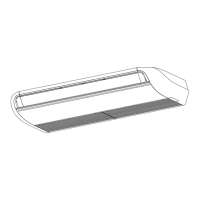
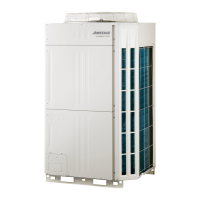
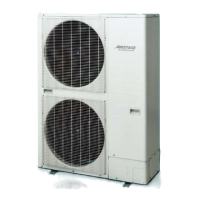

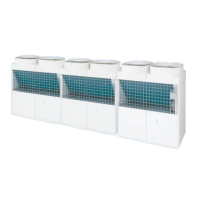

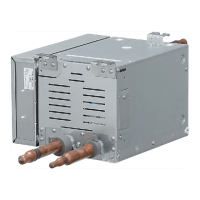
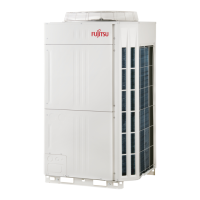
